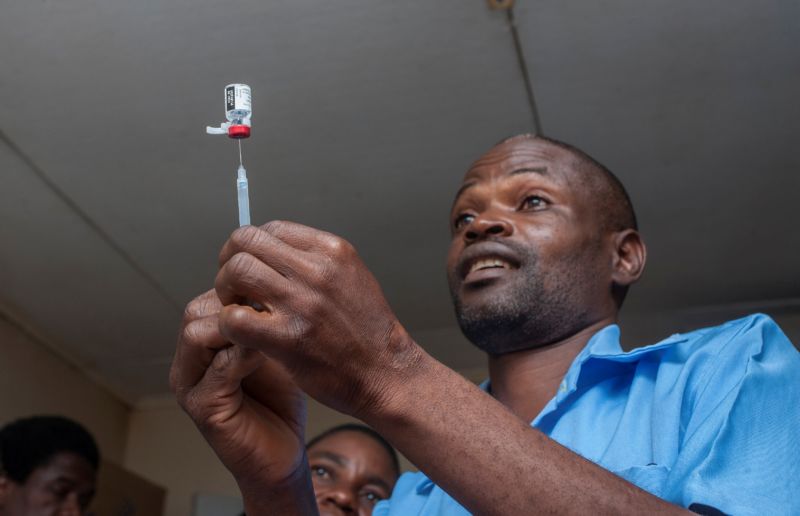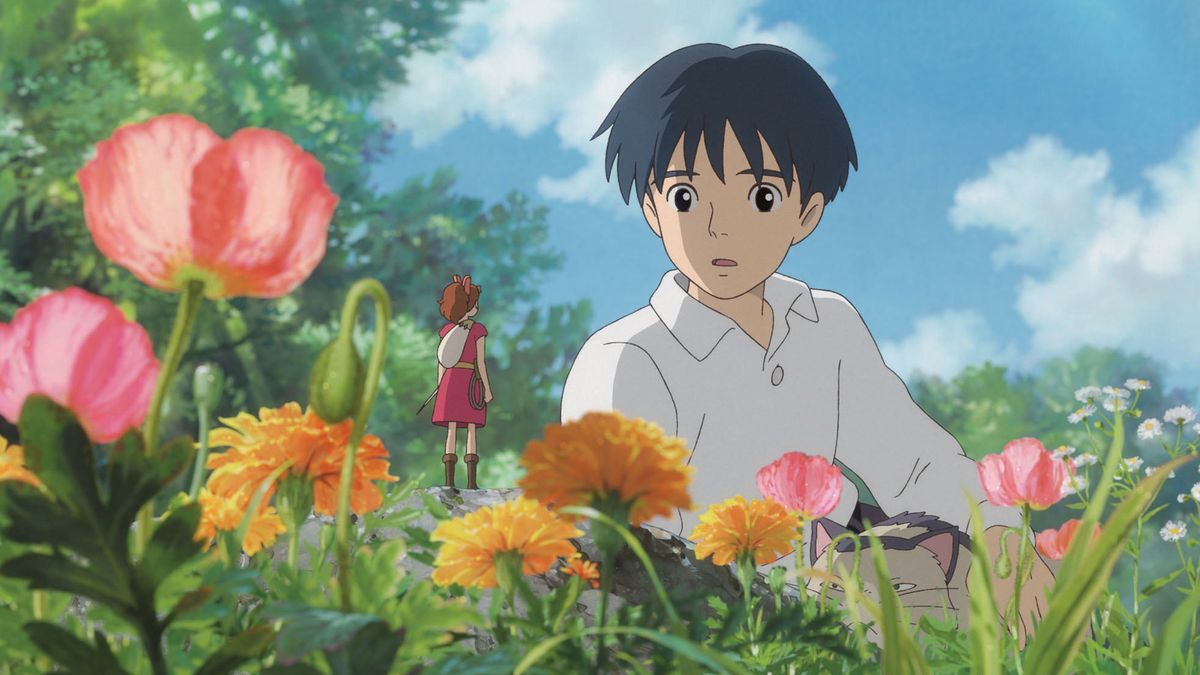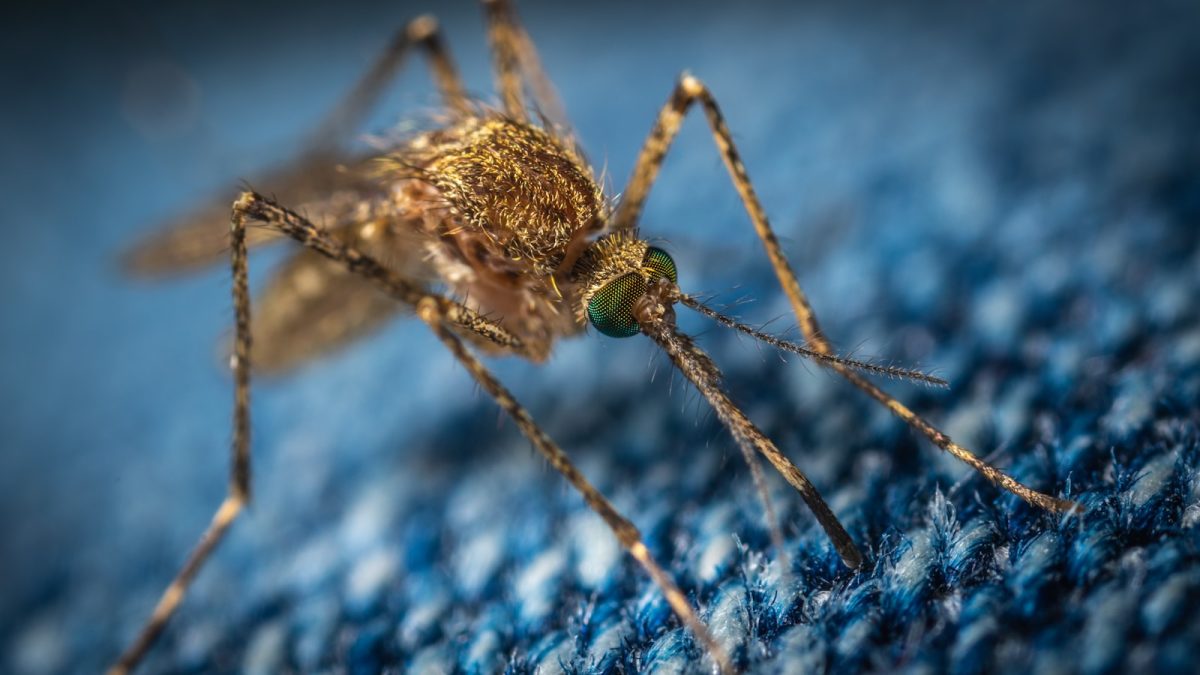First Malaria Vaccine Ever!
Source: AFP/Getty Images
Malaria is a huge problem, especially in Africa, where it is quite a common disease. Every year, there are 200 million cases and 435 thousand deaths. The RTS,S vaccine could change all this. RTS,S is a new technology that fights Malaria before it can infect the liver. A vaccination project was launched in Malawi, and other African countries like Ghana and Kenya will follow. RTS,S’s success rate is only around 40%, but it could still save millions of people, and it is the most successful vaccine of its kind.
Check out the World Health Organization’s malaria vaccine webpage! It provides a good overview of the vaccine and also shows other links to this topic.
How does it work?
The most dangerous and most common form of malaria is caused by a protozoan parasite called Plasmodium falciparum and is transmitted through mosquito bites. It is most common in tropical environments, and sub-Saharan Africa is especially prone to the epidemic. The malaria parasite travels extremely fast through the body. The vaccine tries to stop it in the first stage of the disease before the parasite reaches the liver by targeting a specific protein on the parasite. If the parasite makes it to the liver, it multiplies, matures, and continues to infect the bloodstream. The malaria vaccine is injected in 4 stages, and it is most effective shortly after the 4th injection. It will be given to young people in Africa.

(flickr.com)
(found on research.bayer.com)
Success rate
The RTS,S vaccine is desperately needed, and the 40% success rate will save thousands, even millions of lives. From 2000-2015, Malaria cases have gone down significantly. But from 2015 to 2017, they have been on the rise or unmoving. Malaria is hard to combat because while some drugs for treating malaria have been developed, the parasites developed resistance to said drugs. Because progress has sputtered to a stop, RTS,S will be all the more important. Also, RTS,S’s value lies in its position as a prototype. Because there is already one effective medicine, creating new vaccines will be much easier since there is now a baseline that scientists can build on. While RTS’s impact might not be immediately obvious, it was definitely worth the time and effort that went into developing this vaccine.
This CNN article talks about the impact of the malaria vaccine and also provides some information on how it is being implemented and the malaria tools we currently have: https://www.cnn.com/2019/04/23/health/malaria-africa-worlds-first-vaccine-intl/index.html
Another CNN piece talks about the rise of malaria cases in recent years: https://www.cnn.com/2018/11/19/health/malaria-increase-global-report-2018-intl/index.html
How is this vaccine being implemented?
RTS,S is poised to save thousands, even millions of lives, and several countries have taken advantage of the opportunity. Currently, Malawi, Ghana, and Kenya have started a pilot program on the vaccine, hoping to have 360,000 children vaccinated each year. One possible issue that people worried about was that parents wouldn’t show up for all four shots. However, this is not the case. Many parents have shown up with children as young as 5 months because they recognize the threat malaria poses, especially those who had it previously. If the vaccine manages to achieve its full potential, the program will be expanded, and the vaccine may eventually become mandatory.
(found on www.army.mil)
Here is a link talking about how parents receive this vaccine in Africa:https://www.who.int/news-room/feature-stories/detail/mothers-welcome-world-s-first-malaria-vaccine-in-malawi
(found on health.mil)
But Vaccines cause Autism (wrong!)
Recently, eradicated diseases have popped back into existence. Preventable deaths and illnesses are becoming increasingly common. Why? Many people think vaccines cause autism and refuse to get vaccinated. Social media platforms have circulated a lot of fake news, spread by celebrities, that claims a connection between autism and vaccines. The modern anti-vaccine movement started with a study by Doctor Andrew Wakefield. The study has since been discredited, and Wakefield has been stripped of his medical license. While vaccination has no link to autism, the anti-vaccination movement still exists, which is a growing problem.
Here is a great video discrediting the link between autism and vaccines.
If you’re still not convinced, this link states all the facts of vaccination in a straightforward article: http://www.immunizeforgood.com/fact-or-fiction/benefits-vs.-risks
Every 30 seconds, a child dies from Malaria. It can be stopped. RTS,S is a new vaccine with a 40% success rate. It is poised to save thousands, even millions of lives, and is already being implemented in 3 countries. RTS,S also has value as a prototype, and it is safe and effective. It is a prime example of the engineering process, specifically the ‘define a problem’ and ‘develop and prototype solution’ sections. The problem is malaria, and the vaccine itself is a prototype. All in all, researching RTS,S was worth the cost.











